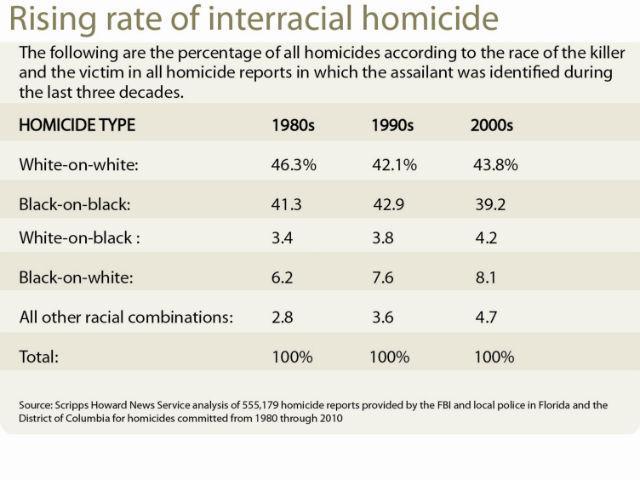First I would like to begin with an I told you so. Those of you whom this is directed at Know who you are. For all the stories and caricatures and paintings of Zimmerman that were being portrayed I sided with him. In most cases when I make an opinion it was well informed, and, despite knowledge of who I am and how I think and operate, people got angry with me when I made this statement. I would like to clear the air and actually present the evidence, as it was when the story broke and what we know now in regards to this case. I would also like to use this as an opportunity to demonstrate some of the critical thinking and logic skills I have been advocating as a means of stopping emotionalism in future cases.
George Zimmerman shot and killed a young 17 year old boy named Trayvon Martin. While death of a youth, particularly from violent circumstances is tragic, this death was met with tremendous fanfare. Somehow an individuals death in Florida was turned into a national case. The coverage of the case was so broad that the defense poorly joked that the jury was selected by simply responding: Zimmerman who? during preliminary selection. While this was a perfect example of the media attempting a trial by popular opinion, this article is not about some of the challenges a 24 hour news cycle and politicized broadcasts bring to our legal system.
For those on the left this appeared to be some sick gift. The narrative was racial prejudice, vigilantism, and the problem with the second amendment. A black kid shot by a white neighborhood watch-man. There were so many boxes checked off by the preliminary information it was too good to be true, a sense of validation for the superiority of democratic ideology. It was too perfect.
No really it was too perfect and that's what set off my Bullshit -o-meter. We weren't hearing forensic reports, medical logs, officers views or witness testimony. We heard a single damn 911 call from moments before, as if that somehow explained anything everything. That's literally all the evidence the media had and they ran with it.
First there was the NBC edit of the call, and oh ya maybe it was a bit racially inflammatory.
http://www.youtube.com/watch?v=Qywt1ds7bSM
Then of course we were treated to these pictures of the evil shooter and innocent kid
| From: the Blaze |
How sweet and innocent, and look at that evil mugshot. The thing is the reality was more like this.
So my bullshit meter was in full swing. If there is one thing I hate its when people try to use pictures of children to promote some sort of stance. Literally I will hunt down and unmercifully destroy anyone who does so. This is truly an automatic red flag for bullshit, above all else. I have said it before and will say it again emotional arguments and images are used as a means of obfuscating the fundamental lack of support for your claims. People are dumb they fall for it every time. Boy did people fall for it this time.
The first elements of racism came up claiming he shot Trayvon because he was black. The NBC edit of the police tape was part of that driving force, the rallies and protests were the other part. Race baiting and the race card, are rarely used now. However this is also an automatic bullshit-o-meter to the max instinctual disbelief. Let me be clear, I have met 1 racist, not two or three or four but one person who literally looked at someone and was inherently afraid of them. This incident occurred in a Target store in Boulder Colorado, some woman was afraid to ask some guy a question and instead tried to solicit help from me because he wasnt white. Frankly I have no idea what nationality he was from, I really have a hard time discerning the subtle differences in pigmentation and facial structure I attribute that to Aspergers, I happily ignored the woman and let her suffer from her own bigotry
The reality is interracial homicide is rare, incredibly rare, so trying to play the interracial crime card was essentially a third giant flag of bullshit for me. I have actually looked at the statistics, The amount of white on black homicide is almost half of the black on white crime. While black-black crime is almost tied with white-white crime that racial subgroup exists at only 12% of the population compared with 72% for whites. On a racial population basis black-black homicide is represented almost 6x more than the percentage of the population. black-white crime with actual percentages being about double black-white crime mean that interracial crime occurs from black-white at almost 12x the reverse. Somehow I doubt the media was attempting to start a discussion on how rare such a homicide was.
 |
| Source: FBI data, http://www.theindychannel.com/news/interracial-homicide-rate-growing |
This also ignored the Zimmermans actual history. The man lived in a neighborhood which was 20% black. He and his wife were tutoring a few black kids after the state had pulled the funding for them. He was also behind a campaign seeking justice for the shooting of a black homeless man by a Sanford police officer. Oh ya and he was Hispanic. It clearly wasnt a white guy shooting a black guy and there is no possible way that race had motivated his actions. End of story.
Then there was some sort of attempt to paint Zimmerman as a wannabe cop, carrying a gun and hunting down the poor scared little boy with skittles. The reality is that neighborhood had several break-ins in the past year, and had actually asked Zimmerman to help with the neighborhood watch. That's why he was there, not because he is some renegade cop wannabe, he was asked to watch the neighborhood. Maybe you have had to deal with police in these circumstances maybe not. The reality is response time, under the best of circumstances is 6-12 minutes and that's typically only for life threatening emergencies. In the case of a burglary or break in response time is on the order of 30+ minutes. A lot can happen in 30 minutes, you don't know the people burglarizing, what they are armed with or how they will respond. In a neighborhood that was repeatedly being robbed, the presence of a neighborhood watch-man, armed with a gun is frankly prudent.
At the end of the few weeks or so of public outcry, after the portrayal of the child had fallen apart, after there was no evidence of racism, well he still got out of the car, and the police told him not to. He was therefore somehow responsible for the death of Trayvon Martin. Guess what that was bullshit too. The statement of "we don't need you to do that sir" is not in any way authoritative, not even remotely. It's a means of releasing the police department from liability. If you saw a child who had fallen through the ice they would tell you the same damn thing. That's irrelevant however, because Zimmerman broke no laws.
The police cant tell you not to walk around a neighborhood, it is not illegal to follow someone or to talk to them. The idea that Zimmerman was somehow culpable because he got out of the car, and then got into a fight with Trayvon martin is a very special logical fallacy, its actually several. Logical fallacies are the difference in opinion and fact.
http://en.wikipedia.org/wiki/List_of_fallacies
So what applicable fallacies can be held to the argument?
Well there is the fallacy of the single cause, post hoc ergo propter hoc, quite specifically the leaving of the truck results in the death of the youngster. There are several other factors that are ignored to draw that conclusion. The most important, Trayvon Martin started and continued the fight.
The problem with this idea that one event caused the inevitable consequence is it simply ignores every other variable in the equation. If Trayvon wasnt ducking between houses in the rain, he wouldn't have looked suspicious. If there hadn't been burglaries on the street Zimmerman wouldn't have even been there. The reality we can play the what if game all day long and come to absolutely no conclusion. I'm sure everyone has an example in there life of what if they made a different choice what would be the outcome.
If I had chosen to take a left out of the driveway instead of a right, if I had chosen to seek the most probable path for my dog based on past behavior rather than expanding the search area using a radius/unit time search area, maybe Dozer wouldn't have been hit by a car. I can play that game too, my dog is still dead. It changes nothing about the fact that a driver was moving too fast to see an 85 lb, black and white husky, or the girl in a red coat waving her arms in the center of the road.
In much the same way, by engaging in absolutely 0 illegal or aggressive actions, George Zimmerman was forced into confrontation with Trayvon Martin. Through no fault of his own, Trayvon Martin decided to punch Zimmerman in the face and break his nose. Trayvon martin committed the first hostile action and the first crime. Even so Zimmerman didn't pull out his gun and shoot him then, he fell to the ground and Martin continued to punch him and bash his head on concrete, this is a felony called battery. Zimmerman still didn't pull his gun out, he called for help. We know all of this to be true from the physical evidence.
We know Zimmerman's nose was broken, we also know that his head was being bashed into the concrete. Ya there are pictures.
| source nydaily news |
| source HLNtv.com |
What we didn't see and what was later found in the forensic details, there were grass stains on the jacket Zimmerman wore, corroborating that he attempted to wiggle off the concrete that his head was being bashed into. from powder burns and forensics we know that Trayvon was most assuredly on top of Zimmerman when he was shot. It is therefore unlikely that Trayvon was the one calling for help. More importantly Trayvon suffered only one other injury beside the bullet, his knuckles were scraped, suggesting that he not only through the first punch but continued the fight.
So we clearly know that Zimmerman was on the ground, getting his head bashed against concrete, attempting to escape from an uninjured aggressor, with difficulty breathing from a broken nose and was calling for help before a shot was ever fired. Regardless of whether Trayvon did or did not reach for the gun, did or did not threaten to kill him, Zimmerman exceeded the requirements for fear of life before reaching for the gun and pulling the trigger.
In this case for this event, the physical evidence is not only present but it is clear and definitive. We cannot have an opinion, we cannot speculate, we know exactly what happened. The aggressor was shot while attempting to beat his opponent on concrete. If you wish to argue with me lets agree that I can break your nose and bash your head on the concrete. We can even run two tests, one to see how long you last before deciding you'll die and two how long you can physically remain conscious while your brain sloshes back and forth on the interior of your skull.
That's the physical evidence and ignores entirely that Trayvon was a violent and unstable individual. He was in Sanford because he was kicked out of school for fighting. His opening move in that fight, a strike to the nose breaking it on his schoolmate. His friends had told him to stop fighting and chill out but he boasted about how he wanted to see more blood. He also had been caught previously with stolen jewelry in his bag, not that he per se stole it that will always be unknown.
He was a lean addict, a form of Robitussin addiction that requires a sweet soda like say a sprite and some fruity candy like say some skittles. This came out from reviews of his text message, and the liver and neurological damage done from prolonged use. Whether he was on the substance at the time is irrelevant, prolonged use increases paranoia and aggression, character traits that his friends and family confirmed were increasing for him.
At the end of the day we had a violent and mentally imbalanced youth, start a fight with an armed individual. This same youth continued to beat the armed man while he was calling for help and attempting to get away. While we will never know whether he actually threatened to kill the pinned armed man calling for help, he had a history of violent action and lexicon so its not implausible. While the end of that youth's life is tragic, as is any loss of life, in this scenario it was almost inevitable.
My condolences go out to the Martin family. My shame to the media that promoted this beyond the evidence and into some national fiasco. The worst of all the players were the prosecutor who had a history of overcharging or political grandstanding, its a great thing that she was indicted by a grand jury, may she burn for her actions.
http://www.sacbee.com/2013/07/02/5539380/zimmerman-prosecutor-angela-corey.html



